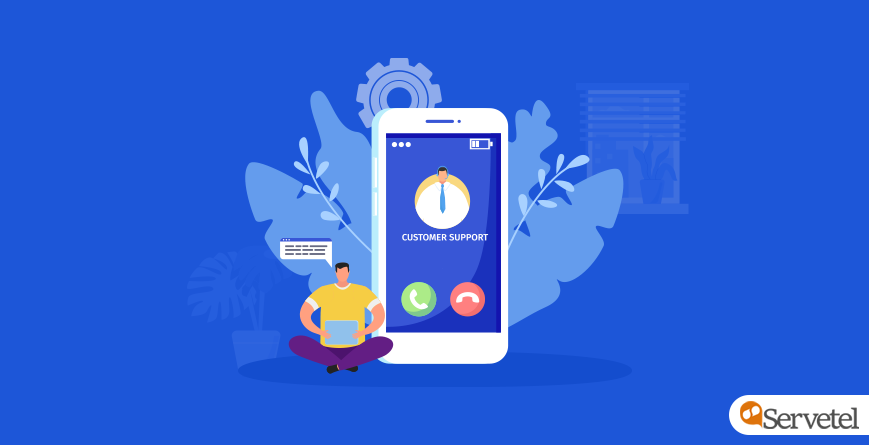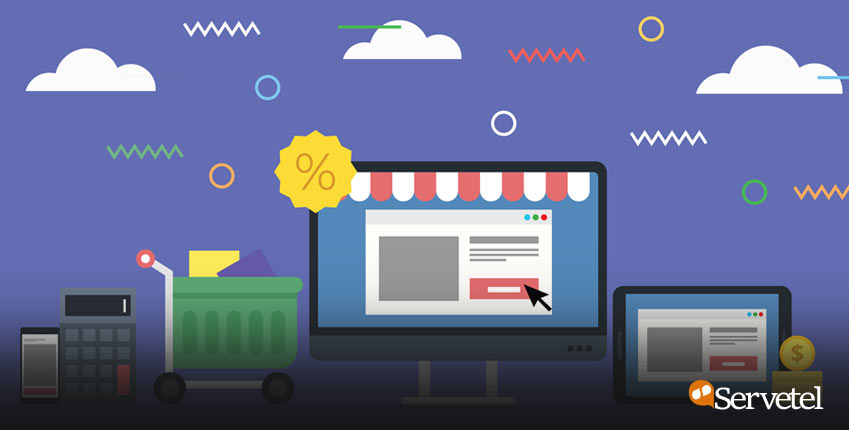This new decade has not had the best start—to say the least. We find ourselves wanting to press the rewind button, back to the last decade. However, while 2010 was not ridden with a pandemic, technology was also significantly less advanced. The spread of technology over these years has been a marvel to behold; every person is now equipped with a smartphone and Internet services.
According to an article by NDTV, over 500 million people in India in 2019 used smartphones, and 77% of these people could access the Internet.
Along with the quantitative increase in the use of smartphones, another great development has been their qualitative enhancements. With immense flexibility, smartphones have replaced desktops and landlines as the primary personal device. Almost anything done on a computer can now be accomplished on a smaller screen—photo editing, writing, analysing documents, gaming, checking emails, accounting sales, or videography.
Similarly, customer service is also reaping the rewards of this digital transformation. A simple mobile phone can be converted into a call centre solution with the right services.
Why do You Need a Mobile Call Centre?
Among the many lifestyle changes the pandemic brought with it, the shift in work culture has been especially prominent. Work from home is the norm rather than an exception. Within this climate, quickly establishing a fully-functional remote support centre is necessary.
Furthermore, as customer service has evolved, geographic barriers are dissolving with increased global connectivity and virtual assistance. Using cloud technology, this shift to a remote set-up becomes considerably easier. Not only do you get an efficient phone system, but the cloud offers a variety of features that elevate your entire communication model.
However, people seem to have many concerns about remote work culture. Lack of communication, poor quality of work, and mismanagement are all used as excuses. While these points may have been true in the past, modern technology has allowed us to resolve all such issues and rather create better opportunities. But, before we answer the question of ‘how’, let’s explore the benefits:
- By reducing the need for office space and equipment, you can reduce capital expenses immensely. The lack of maintenance costs also adds to this advantage.
- Remote work capabilities eliminate geographical barriers and let you recruit people solely on the basis of talent and experience—anywhere across the globe.
- You save on costs by automating routine tasks with artificial intelligence. A smaller team can work to the potential of larger groups.
- Your employees can maintain a better work-life balance with the ability to finish tasks at home. Any personal commitments or stressful events can be dealt with efficiently without compromising the team’s output.
- Modern technology allows businesses to operate with the utmost flexibility. With easy continuity, scaling, relocating and quick incorporation of newer inventions into the system, your business is sure to bloom.
However, there are a few points you need to keep in mind to take your call centre set-up to the cloud for optimal results.
Ensure Your Employees have the Basics:
When it comes to working from home solutions using a smartphone or tablet, you must ensure that your employees own compatible versions of these devices. Apart from the gadgets, they also require stable Internet connections in order to perform their tasks without any hindrance. In this technological era, it’s highly likely that your staff is already equipped with both. The next step is to install call centre software onto everyone’s systems.
(1) Reroute Calls Using IVR (Interactive Voice Response):
Interactive Voice Response is one of the most popular work-from-home tools. It essentially acts as a virtual receptionist and diminishes the need for manual intervention. When a consumer calls, they are greeted by an auto-attendant and then rerouted to the preferred agent according to their keypad input. Using cloud solutions, IVR can function over any device, from anywhere. Even if your agent is not on-premise, the call can be forwarded directly to their personal device for perfect continuity.
(2) Safe and Easy Contact With a Toll-Free Number:
Virtual numbers and IVR often go hand-in-hand. Toll-free numbers are the 1800 pattern digits you may recall from advertisements or billboards. They are free for the callers and act as a centralised avenue for contact. Here’s why they’re becoming the backbone of business communications:
- The easy-to-remember patterns leave a lasting impression on customers.
- You can add multiple extensions so that callers can directly contact the department they require and speak to agents located anywhere.
- You can protect your personal details by marketing the toll-free number as your primary business number.
- A toll-free number is not bound to a location but can be dialled free of cost within India, while also giving off a professional and larger-scale image for your brand.
(3) Communicate With a WebRTC:
Customer service representatives are the first point of contact for formal communications with consumers. This means communication in this department is absolutely crucial.
WebRTC refers to web real-time communication. This open-source project enhances the quality of conversations with callers by allowing peer-to-peer interaction via a common set of protocols. WebRTC is supported by major browsers and also accepted by the World Wide Web Consortium.
(4) Turn Your Phone Into a Self-contained Contact Centre With CTI:
CTI refers to computer telephony integration that gives you access to various features of the cloud on your smartphone or tablet. A pop-up screen for information will provide your executives with consumer information. The calls, along with this information, can also be instantly transferred to another agent.
For example, if an agent is called regarding a return, the customer’s order details will become visible on the screen on the same portal that makes the call. If they feel they cannot adequately resolve the query, they can also transfer the call to a superior. This reduces the need for consumers to repeat information.
Conclusion
Your office door may be locked, but your business will never come to a standstill. The need for efficient customer service has only intensified in the era of physical restrictions. This is the time to improve your call centre solutions and ensure that consumers stay committed to your brand.
More and more agents are operating remotely and thus, working with mobile is the most convenient option. Using cloud call centre solutions, CTI, and WebRTC, any customer service executive can convert their house into a workspace. With clear benchmarks and communication expectations, you can ensure productivity despite the distance.
Not sure how to manage a contact centre team spread across various cities? Boost productivity and ease operations with the virtual call centre software offered by Servetel today! Contact us at 1800-120-4132 now.

















